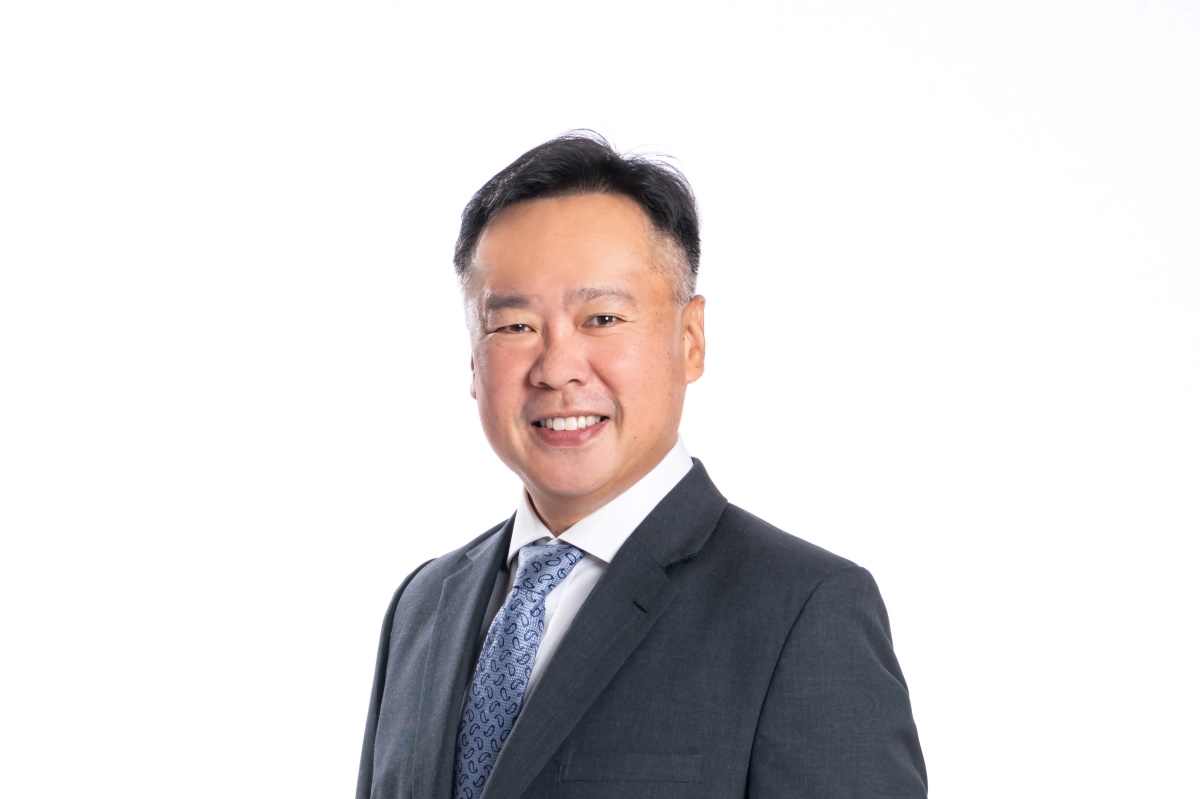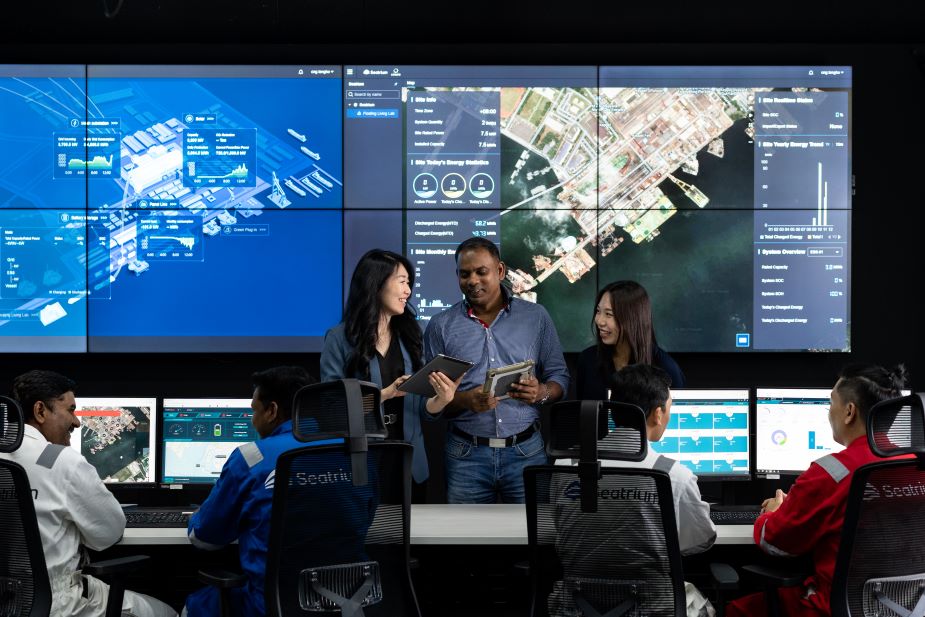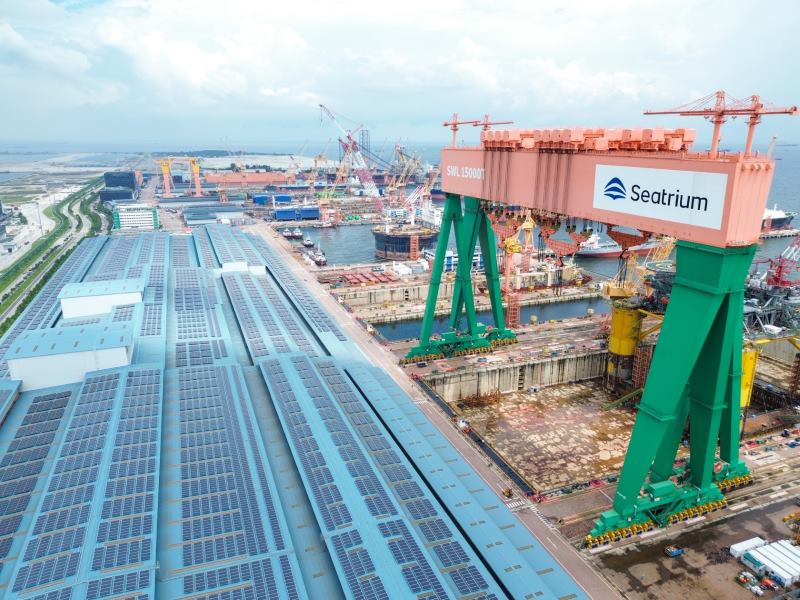How Seatrium is building a global engineering brand from a Singapore dock
Stocks
Powered by

By Julian Wong • 16 Jul 2025
Why trust Beansprout? We’ve been awarded Best Investment Website at the SIAS Investors’ Choice Awards 2025
Just 2 years into his career as a young engineer, Chris Ong found himself on a plane headed overseas to start up industrial machinery. More than two decades later, he is now the CEO of Seatrium, one of the world’s leading offshore and marine engineering firms that is charting a new course in the global energy landscape—backed by a brand of Singaporean reliability recognised far beyond its borders.

From rig builder to global integrator
Seatrium was formed in 2023 through the merger of two offshore heavyweights—Keppel Offshore & Marine and Sembcorp Marine. While both companies came with their own rich histories as seasoned operators in the industry, the merger paved the way for a shift in how the newly formed entity would operate.
“We used to be known as an oil rig builder,” says Chris Ong, CEO of Seatrium.
“Today, we’re doing six newbuild P-series FPSOs and leading in integration globally.”
A key highlight is the upcoming delivery of the P-78 FPSO to Petrobras, the first of the six P-series FPSOs on order.
The P-78 project transcends geographical boundaries and taps on Seatrium’s global talent pool and expertise for seamless execution under the Group’s “One Seatrium Global Delivery Model”. Overall management of the project, interface coordination, and topside engineering are centralised in Singapore, while the hull and accommodation blocks are constructed by Seatrium’s partner yards located in China and Korea. The fabrication of the topside modules occur in Seatrium’s yards in China, Brazil and Singapore, as well as at subcontractor facilities.
For those unfamiliar with the offshore industry, an FPSO is a Floating Production Storage and Offloading unit, essentially a mobile production facility used to process extracted resources, store them, and then transfer them to tankers to be transported to onshore facilities.
With growing demand for larger, more complex energy infrastructure assets, Seatrium has shifted its focus from product-based, yard-specific operations to a model winning formula that allows it to deploy capacity and talent across a global network.
“The key thing is to centralise planning and business segments so that we can execute horizontally across all our facilities—not just build one project in one yard,” says Ong. “The One Seatrium Global Delivery execution is having footprint around the world, serving customers all around the world, and delivering products all over the world.”
Practically, this means that project managers, for instance, are coordinating components and assets worldwide and across different business units and time zones, before they return to a single yard for integration.
Navigating cycles with a long-term view
But before all that, Ong is quick to point out that Seatrium’s transformation didn’t happen in a vacuum. Its predecessor entities − Keppel Offshore & Marine and Sembcorp Marine − weathered some of the most turbulent years in oil and gas history, including the 2014 oil price collapse and subsequent downturn. During those years, global demand dried up and both companies had to grapple with overcapacity in the industry.
While expansion plans had to be moderated, research and development (R&D) never cease, even as others saw it as the “end of the industry”.
“Whatever dollar we invested back then, we had to be sure it would pay off,” says Ong. “And it’s paying dividends today.”
This long-term view has defined Ong’s leadership style: being people-focused and strategic.
“I see myself as playing the part of a strategist, a team leader, and someone with a good listening ear—with humanity—for what our people and shareholders want,” he says. “I like to engage people, talk to them, walk the ground. If I’m not in the office, I’m with the teams.”
Beyond people, Seatrium is also betting on a hybrid energy future as it balances its extensive track record in oil and gas and its growing portfolio in renewables. “We believe the world’s energy mix will include both traditional oil and gas and renewables,” says Ong. “Our strategy is to play a critical role in both.”
While oil exploration has declined, demand for energy production infrastructure—like FPSOs and Floating Storage Regasification Units (FSRUs) —remains strong. Electrification and decarbonisation are also pushing Seatrium into new waters: high-voltage offshore substations, offshore wind turbine/foundation installation vessels, and maritime carbon reduction solutions.
For Ong, this is what it means to be realistic and relevant, to have a "belief in the capability of the company".
“We want to articulate to our people that it is our capability, resilience, and brand equity that will differentiate us.”
This brand trust has opened doors to new industries and geographies. In offshore renewables for example, Seatrium is building towards 14 gigawatts’ worth of offshore substations with enough capacity to power over 10 million homes —more than Singapore’s own peak electricity demand.

A Singapore brand with strong support
Although Seatrium is based in Singapore, it doesn’t serve any domestic customers. “Seatrium is a Singapore brand, but it is a truly global company,” Ong says. “We don’t have local customers; we serve the energy majors of the world.”
These include names like ExxonMobil, Shell, bp, and Petrobras. In Brazil alone, the six P-series FPSOs to be delivered by Seatrium are responsible for 1.3 million barrels of oil production per day—nearly a third of the country’s output.
At the same time, Ong is clear-eyed about what it means for Seatrium to be a publicly listed company on the Singapore Exchange (SGX). “We’re a fully commercial SGX-listed company. The day we’re not viable is the day we’re gone.”
Pointing out how Singapore doesn't have a big hinterland or that Seatrium doesn't have a national oil company behind it, Ong emphasises, "We stand on our own two feet," and that Seatrium must earn its keep in every market it enters.
Thus far, Seatrium seems to have delivered on this. Ong shares how the first year after the merger was focused a lot on branding, and how every opportunity and platform was used to tell people how 'One Seatrium' was going to work, and to help both companies see how their winning cultures could succeed together.
"At all levels, we had strong support," he says.
“Even our retail shareholders are deeply engaged. At our AGM, they ask very strategic questions,” Ong shares. “We’re fortunate to have shareholders who understand what we do.”
Looking ahead to 2028
After 26 years in the same organisation, Ong has seen the industry change drastically—from analogue systems and paper blueprints to AI-driven planning and remote sensor integration. But what has remained constant is the value of engineering itself.
“Some people still think this industry is low-tech or old-fashioned,” he says. “But look at what we do. We’re building offshore power stations. We’re integrating electrification, carbon capture, and digital systems into megastructures at sea.”
While attracting talent remains a challenge, Ong sees opportunity: “In Singapore, how many companies can actually show you the world?”
He adds, “We empower our people, let them make mistakes, and guide them to get better. It’s a village, but it’s global.”
Seatrium has currently set a clear target to achieve a return on equity (ROE) of more than 8% by 2028.
FY2024 marked Seatrium's first full-year profit since 2017 of S$157 million, reversing FY2023's net loss of S$2.0 billion. As of 1Q 2025, its net order book also stood at S$21.3 billion, comprising 26 projects with deliveries until 2031.
The message to the organisation is simple: stay focused, stay united, and keep delivering.
“We’re only two years into the Seatrium journey,” Ong says. “But the foundation is strong. The capabilities are there. And the world is starting to see what we can really do.”
About Seatrium Limited

Seatrium Limited provides innovative engineering solutions to the global offshore, marine and energy industries. Headquartered in Singapore, the Group has over 60 years of track record in the design and construction of rigs, floaters, offshore platforms and specialised vessels, as well as in the repair, upgrading and conversion of different ship types.
The Group’s key business segments include Oil and Gas Newbuilds and Conversions, Offshore Renewables, Repairs & Upgrades, and New Energies, with a growing focus on sustainable solutions to advance the global energy transition and maritime decarbonisation.
As a premier global player offering offshore renewables, new energies and cleaner offshore & marine solutions, Seatrium is committed to delivering high standards of safety, quality and performance to its customers which include major energy companies, vessel owners and operators, shipping companies, and cruise and ferry operators.
Seatrium operates shipyards, engineering & technology centres and facilities in Singapore, Brazil, China, India, Indonesia, Japan, Malaysia, the Philippines, Norway, Saudi Arabia, the United Arab Emirates, the United Kingdom and the United States.
Discover more at https://seatrium.com.
About kopi-C: the Company brew
kopi-C is a regular column by SGX Research in collaboration with Beansprout (https://growbeansprout.com) that features C-level executives of leading companies listed on SGX. These interviews are profiles of senior management aimed at helping investors better understand the individuals who run these corporations.
Read also
Most Popular
Gain financial insights in minutes
Subscribe to our free weekly newsletter for more insights to grow your wealth
Comments
0 comments